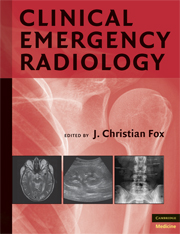Book contents
40 - MRI of the Spine
from PART IV - MAGNETIC RESONANCE IMAGING
Published online by Cambridge University Press: 07 December 2009
Summary
CLINICAL INDICATIONS
MRI has become accepted as the most sensitive imaging modality for the study of spine pathology. Specifically, in the examination of spinal cord trauma, soft tissue injury, and acute intervertebral disc injury, MRI has a higher resolution than any other modality. However, despite optimal visualization of MRIs, it is often not the most appropriate initial imaging study because plain film radiographs and CT scans can provide diagnostic information faster and more cost effectively (1).
MRI is indicated in blunt spinal trauma patients with neurological findings suggestive of spinal cord injury without a clear explanation following radiographs and/or CT (2). Emergent MRI of the spine is also generally indicated in the evaluation of spinal cord pathology with signs of myelopathy, radiculopathy, and progressive neurological deficit. Despite these seemingly clear indications, the risk of missing a spinal cord injury makes this decision a major dilemma for physicians. The medical and legal ramifications of restricting diagnostic MRI and failing to diagnose a patient with an unstable spine injury are clearly evident. In contrast, the ubiquitous use of expensive and time-consuming imaging equipment can inappropriately drive up the cost of medical care and possibly render emergency resources unavailable to other patients. Therefore, it is important to gain as much information as possible from the history, physical exam, and preliminary imaging studies to aid the physician's decision for selecting MRI for potential spinal cord pathology (3).
Keywords
- Type
- Chapter
- Information
- Clinical Emergency Radiology , pp. 538 - 559Publisher: Cambridge University PressPrint publication year: 2008

